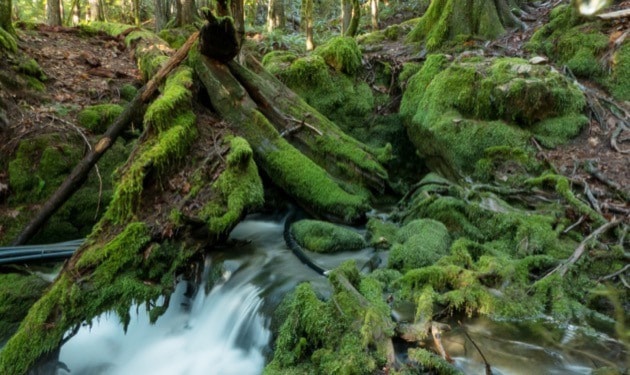I’ve always had a very ambivalent relationship with caves. But I still find them fascinating even if I’m not big on going in them. Some people though, are avid spelunkers.
Cave exploration is a very ancient past-time for humans. Heck, we used to live in them. And the local First Nations ancestors on the west coast used to put their dead in them. So such fascination with caves comes naturally, across all cultures.
So when I saw a Facebook event about karst sponsored by the Sierra Club, I thought I might learn a thing or two.
Reid Robinson, a local karst expert was one of the hosts. He is a staunch advocate of proper management of karst topography, especially where people use the water from it for drinking water.
Vancouver Island has more caves than anywhere else in Canada. That is because there is a lot of limestone here. There are dozens of places where limestone and marble exist across the island, mostly near Tahsis, Gold River, Sayward, Woss, and other North Vancouver Island locations. But several of them are in this area.
The Horne Lake Caves is a busy tourist attraction. And the area around it includes other features of karst topography like sinkholes. The prominent cliffs that you can see on the northwest edge of the lake are part of the same band. They are popular with rock-climbers.
Another area of karst is closer to Port Alberni. It is just east of the Alberni Lookout and above the community on the way up the Hump. The road to the lookout goes over part of this area.
As you approach the lookout along the 4WD road, look for the sink holes on your left. They aren’t caves now. But they were caves that have now collapsed. If you ramble about the area bushwhacking you will come across many others.
In the same area there is a magnificent waterfall that bursts out of the ground. There is no stream above the waterfall at all, except when the water is exceptionally high. It is this waterfall where that small community gets their drinking water from.
There is another area where a stream flows into the base of a rock ledge and disappears. In the same area is a notorious cave, the Cascadia Cave, where a couple of spelunkers almost lost their lives when the water came up while they were in it last winter. This adventure was featured last May in the Vancouver Sun.
This cave is long and treacherous requiring advanced climbing and spelunking skills. To prevent future accidents, the entrance is blocked and locked with railway rails.
Another area of karst exists up on the hillside overlooking the south side of Stirling and Two Rivers arms of Sproat Lake. Rumor has it that there are nine caves up there. In one of them, a new species of insect was recently documented. Below this area of karst is Fossli Provincial Park. And if you look in the creek that flows through the park, St. Andrews Creek, you will find limestone pebbles in it. How can you tell? Well if you put a few drops of an acid like vinegar on a pebble, it will fizz. It might be a slow fizz because vinegar isn’t a very strong acid.
Further west there is another area of karst on the west side of the Kennedy River. It includes Steamboat Mountain. The route to it starts near the West Coast Wild Zipline. It is not a trail, but a flagged route that is very steep and brushy.
Although I have never been to it, the descriptions of it are incredible. It is likely very much like the area karst I once had a chance to visit near Skull Lake, near Effingham Inlet, near the back of Barkley Sound. Beneath a canopy of old growth cedar and hemlock there was almost no soil, just leaf litter and bedrock. But the trees that grew there were magnificent.
There was limestone exposed everywhere. It was formed into sharp winding ridges with deep chasms between them, and you could hear the sound of rushing water below you.
Copious amounts of rainwater had slowly dissolved the rock into a wonderland of rock, water and trees.
I literally stepped from one ridge to the next wondering if the ridges would cut the soles of my caulk boots open, they were so sharp. Once, I came upon a pool of water bubbling out of the ground.
Elsewhere in the same area I followed a creek underground into a cave and walked through it until the creek emerged back into daylight at the end of Pipestem Inlet.
I’ll never forget that experience. Sadly, the area was logged, so I’ll never be able to repeat it.
Sandy McRuer is an outdoor enthusiast, birder and tour guide based in the Alberni Valley.
